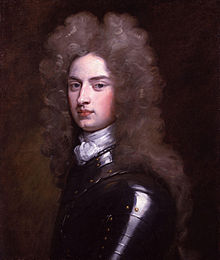
William III, also widely known as William of Orange, was the sovereign Prince of Orange from birth, Stadtholder of Holland, Zeeland, Utrecht, Guelders, and Overijssel in the Dutch Republic from the 1670s, and King of England, Ireland, and Scotland from 1689 until his death in 1702. As King of Scotland, he is known as William II. He ruled Britain and Ireland alongside his wife, Queen Mary II, and their joint reign is known as that of William and Mary.

Zutphen is a city and municipality located in the province of Gelderland, Netherlands. It lies some 30 km northeast of Arnhem, on the eastern bank of the river IJssel at the point where it is joined by the Berkel. First mentioned in the 11th century, the place-name appears to mean "south fen". In 2005, the municipality of Zutphen was merged with the municipality of Warnsveld, retaining its name. In 2021, the municipality had a population of 48,111.

Earl of Albemarle is a title created several times from Norman times onwards. The word Albemarle is derived from the Latinised form of the French county of Aumale in Normandy, other forms being Aubemarle and Aumerle. It is described in the patent of nobility granted in 1697 by William III to Arnold Joost van Keppel as "a town and territory in the Dukedom of Normandy."

The Dukedom of Albemarle has been created twice in the Peerage of England, each time ending in extinction. Additionally, the title was created a third time by James II in exile and a fourth time by his son the Old Pretender, in the Jacobite peerage. The name Albemarle is derived from the Latinised form of the French commune of Aumale in Normandy, other forms being Aubemarle and Aumerle. It arose in connection with the ancient Norman Counts of Aumale of Aumale in Normandy. See also Earl of Albemarle.
The County of Aumale, later elevated to a duchy, was a medieval fief in Normandy, disputed between France and England during parts of the Hundred Years' War.

Lieutenant-Colonel William Coutts Keppel, 7th Earl of Albemarle,, MP, ADC, styled Viscount Bury between 1851 and 1891, was a British soldier and politician. He served in the British Army before entering Parliament in 1857. Initially a Liberal, he served as Treasurer of the Household between 1859 and 1866 in the Liberal administrations headed by Lord Palmerston and Lord Russell. He later switched to the Conservatives and held office as Under-Secretary of State for War under Lord Beaconsfield between 1878 and 1880 and under Lord Salisbury between 1885 and 1886.

William Bentinck, 1st Earl of Portland, was a Dutch-born English nobleman who became in an early stage the favourite of William, Prince of Orange, Stadtholder in the Netherlands, and future King of England. He was reportedly steady, sensible, modest and usually moderate. The friendship and cooperation stopped in 1699.
William le Gros, William le Gras, William d'Aumale, William Crassus was Earl of York and Lord of Holderness in the English peerage and the Count of Aumale in France. He was the eldest son of Stephen, Count of Aumale, and his spouse, Hawise, daughter of Ralph de Mortimer of Wigmore.

Godard van Reede, 1st Earl of Athlone, Baron van Reede, Lord of Ginkel, born in the Netherlands as Baron Godard van Reede, was a Dutch general who rose to prominence during the Williamite War in Ireland.

Lieutenant-General WillemAnne van Keppel, 2nd Earl of Albemarle was a British soldier, diplomat and courtier.

Lieutenant-General William Keppel was a British Army officer and Member of Parliament.

George Keppel, 3rd Earl of Albemarle KG PC, styled Viscount Bury until 1754, was a British general and nobleman. He is best known for his decisive victory over the Spanish during capture of Havana in 1762, as part of the Seven Years' War.

Frederick Keppel was a Church of England clergyman, Bishop of Exeter.
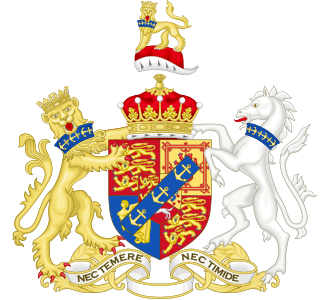
Geoffrey William Richard Hugh FitzClarence, 5th Earl of Munster, KBE, PC was a British peer and Conservative politician.
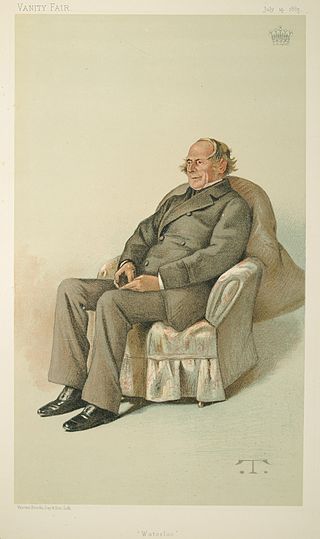
General George Thomas Keppel, 6th Earl of Albemarle,, styled The Honourable from birth until 1851, was a British soldier, Liberal politician and writer.
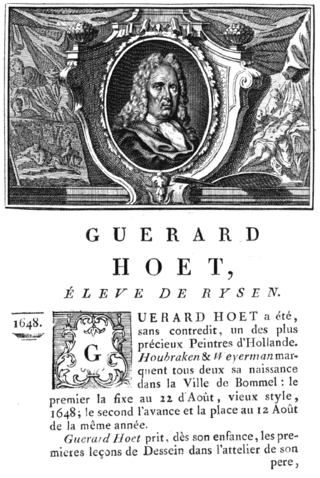
Gerard Hoet was a Dutch Golden Age painter and engraver.
Arnold Joost William Keppel (1884–1964) was an English journalist, writer and landowner. He served in the Royal Flying Corps, and during the 1920s was selected as a Labour Party parliamentary candidate.
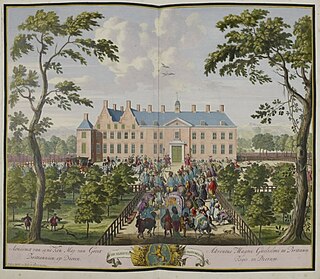
Hof te Dieren is a former hunting lodge in Dieren, the Netherlands. It was a favourite retreat of the princes of Orange and king-stadtholder William III at the south-eastern border of the Veluwe. Nothing remains of the lodge nor from the 19th century manor house which was built as replacement. The estate is open for visit.

Coldenhove Castle was a castle in Eerbeek, the Netherlands. Due to its excellent location in the Veluwe, the castle used as hunting lodge by the dukes of Guelders and the princes of Orange. Nothing remains anymore of the castle or its gardens.
